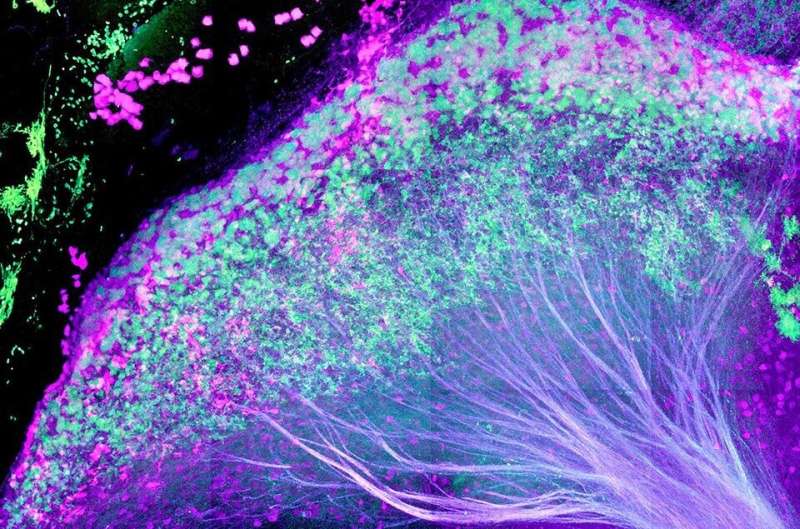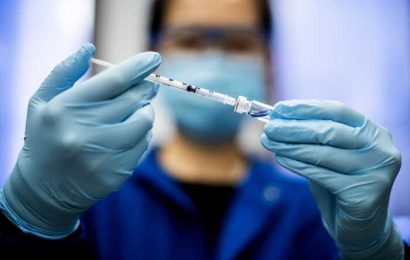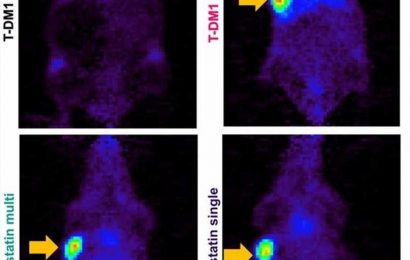
A tiny but important area in the middle of the brain acts as a switch that determines when an animal is willing to work for a reward and when it stops working, according to a study published Aug. 31 in the journal Current Biology.
“The study changes how we think about this particular brain region,” said senior author Melissa Warden, assistant professor and Miriam M. Salpeter Fellow in the Department of Neurobiology and Behavior, which is shared between the College of Arts and Sciences and the College of Agriculture and Life Sciences.
“It has implications for psychiatric disorders, particularly depression and anxiety,” Warden said.
The paper, “Tonic Activity in Lateral Habenula Neurons Acts as a Neutral Valence Brake on Reward-Seeking Behavior,” illuminates the role of the lateral habenula, a small structure on top of the thalamus, which funnels higher-level information from the front and center of the brain to areas that produce neurotransmitters such as serotonin and dopamine.
The lateral habenula’s exact role has been unclear until now. The new study shows that when neurons in this brain area turn off, an animal will work for rewards; when those neurons fire, the animal becomes disengaged and stops working. Experiments revealed that the lateral habenula turns on specifically when an animal has had enough of a reward and is satisfied, or when it finds its work no longer yields a reward.
Neuroscientists assign positive and negative values to brain areas, based on their functions. Previous work has shown that the lateral habenula turns on when an animal is in depressive states, associated with low moods, melancholy and anxiety in humans, which are viewed as negative.
“A more general explanation for the habenula is not negative/positive—it’s whether an animal is willing to work or not,” Warden said.
This is important as neurosurgeons have been investigating the lateral habenula as a target for deep-brain stimulation to treat severe depression. Since the lateral habenula regulates whether someone is willing to work for rewards, this study suggests it might not be a good target for treating anxiety, low moods and melancholy, Warden said.
Instead, the lateral habenula may be a more appropriate target for treating disorders related to apathy, when a patient is disengaged from the world, Warden said. Though depression and apathy are often associated, there are conditions found in some types of schizophrenia, when a patient has localized brain damage, and Parkinson’s disease, where apathy exists without low moods.
“But beyond cases where symptoms appear in isolation,” Warden said, “a major push these days in studying psychiatric disorders is trying to understand if and how different symptoms of a disorder are regulated by different networks in the brain.”
In the study, the researchers used mice engineered so that cells in the lateral habenula fluoresce when they fire, and stop fluorescing when they are inactive. A fiber optic filament placed above the habenula collects and counts photons from the fluorescence and provides a population-level record of activity. The mice were placed in a box with a hole on one side and a water spout on the other; when a mouse stuck its head through the hole, it received a reward of water.
In one experiment, cells in the lateral habenula showed sustained firing when the animals disengaged from work because they had had enough of the reward and were satisfied and stopped on their own. In another experiment, when the researchers turned off the reward, after initial persistence, the brain area became active when the mice quit the task. The researchers found that the lateral habenula fires specifically when the mouse quits.
The researchers also used a technology called optogenetics to control activity in the habenula. In these experiments, mice were engineered to express a molecule that inhibits activity in the habenula in the presence of light. Inhibiting this brain area caused the mice to work longer despite collecting rewards, Warden said.
Source: Read Full Article


